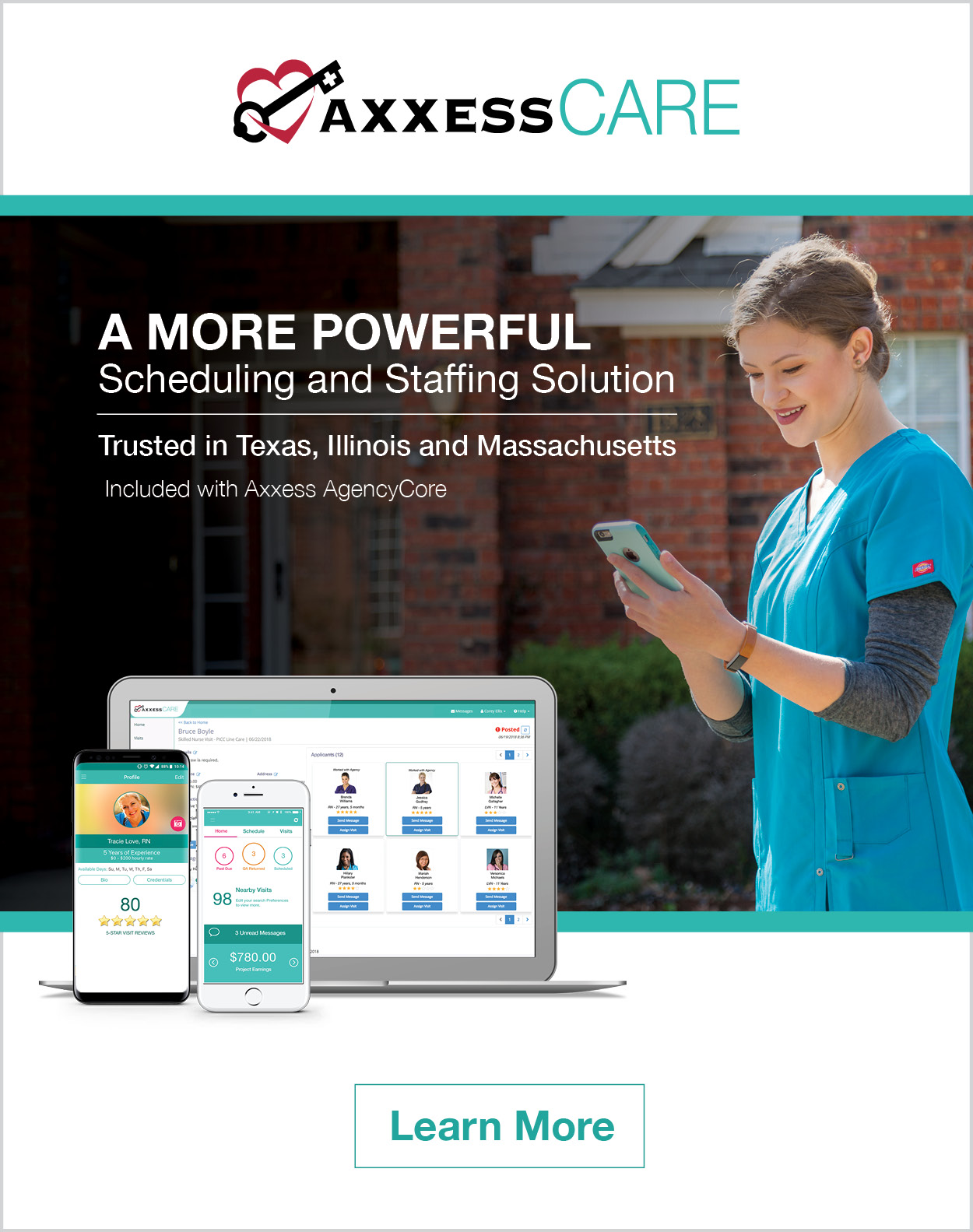
There’s no more bracing for impact. PDGM has hit and it’s here to stay. For some agencies, it’s been quite the blow to their resources and psyches. Agencies must now plan, deliver, document, and bill for care twice as often. So, how do you stay ahead of the new pace? We’ve broken the patient documentation processes into six easy-to-implement focus areas to optimize your strategy.
Start Off on the Right Foot
You only get one chance at a first admission. Complete, accurate, and timely documentation is crucial. More than ever, there is a heavy reliance on informed clinical documentation and a proper diagnosis. The Start of Care is key in optimizing your reimbursement. Clinicians need to assess and document a new Plan of Care as soon as possible. But don’t stress about the expedited timeline just yet, because if you’ve hit the ground running, all you’ll need to continue to stay on pace is a well-oiled documentation process. For every Plan of Care, ensure all data is collected and categorized in a manner that is replicable and minimizes confusion and room for error. Capturing and uploading this documentation can seem tedious, but implementing a document management solution will help shorten the process while tracking each step.
Monetize on Monotony
All the tasks that must be completed for every Plan of Care, care coordination, scheduling, authorizations, and signoffs can be automated. It’s 2020; technology is your friend. Do you have your workflow set up and segmented based on departmental needs? Does your data auto-route once the necessary approval has been granted? If not, this could save some serious time. There are many solutions that offer this, some even with direct integrations into your EMR. Leveraging an integrated solution can save even more time by auto-filling all the data that you’ve already entered into the patient record. Don’t bog down your team with duplicated data entry. Be smart about the solution you choose.
Are you tired of tracking down physician sign-off? Eliminate the tracking and follow-up that is pulling your team down. You can send and resend physician orders as needed based on your workflow. Not to mention, you can keep a scorecard of which physicians are getting back to you in a timely manner versus which ones you need to plague with faxes, emails and phone calls continuously. You can also track your progress on outstanding orders to see how you are doing. This real-time view of your completed and outstanding orders is a big win, which leads to the next key element to have in place for PDGM.
Get a Bird’s Eye View
Dashboards and reports are great when tracking performance and productivity, but they do more than show you data in colorful charts. They tell a story, with context that is difficult to gain in any other way than having a consistent pulse on the landscape. This creates a more agile management experience because it makes pinpointing inconsistencies or blips on the radar much faster. When you only have half the time to ensure you are delivering, that early identification can be vital. Don’t miss a required order and put your team at risk of submitting to insurance only to be denied reimbursement. Knowing the landscape is imperative to staying on top of the process and ensuring there are no breakdowns, while also having the ability to pinpoint a misstep earlier in the process. One of the goals for PDGM is to drive closer, more collaborative relationships amongst HHAs, hospitals, and skilled nursing facilities. Find ways to use the data you have to bring solutions to the table and build on those relationships. We’re all in this together, so tackling as a team is a win/win.
Keep the House in Order
Nothing feels better than a clean and orderly home. The same goes for your patient records and documentation surrounding the Plan of Care. No one should ever have to go searching to track down an associated patient document or be confused about which document should be associated with a specific episode. The ability to retrieve a document with a simple search isn’t a nice-to-have anymore; it’s critical when gathering the proper documentation to bill. Taking it a step further and creating a way for multiple departments to check off the collection of necessary documents will also help remedy fear of the unknown. Working with cross-functional teams to coordinate care doesn’t have to get confusing.
Consistency is King
We’ve established the need to access the same information in the same place every time you go to look for it. The same goes for the procedures surrounding documentation and getting supporting data to a central location. Having a system with checks and balances to ensure your records are fully completed and that you are taking the required steps prior to uploading and attaching to the patient record helps to eliminate confusion and reduces room for error. This unburdens your staff and helps free up the need for micromanagement. Let technology put those fences around your processes and prompt your users for the right information. Enlisting the help of a document management company, like WorldView, can help you by working with templates to ensure the right documents are being uploaded and attached properly every single time.
Eye on the Prize (or Patient)
Remote Patient Monitoring and tracking patient data collection, such as wound progress, via electronic devices, helps maintain consistency and quality of care in real time. Allowing staff to fully leverage their mobile devices for documentation is a game-changer. Instead of waiting for documents to physically be brought in before review or risking a potential “Lost in Transit” scenario, users can upload docs, collect signatures, document wound progression, and securely message other staff about sensitive patient information right from their mobile device. This enables you to start gaining momentum while maintaining quality of care that is crucial for your business and your patients.
When you aren’t focused on the minutia of tracking paperwork, you’re able to maintain focus on the patient. PDGM is intended to allow home health agencies to focus less on administrative duties and more on delivering care that will directly benefit their patients. Don’t allow it to have the inverse effect on your organization. Seek out ways to save time by becoming more efficient and effective, without cutting corners.
Does your agency need help adapting to PDGM changes without missing a step? Register for this exclusive PDGM webinar and learn how to reduce processing time for all patient documentation by up to 90%.

